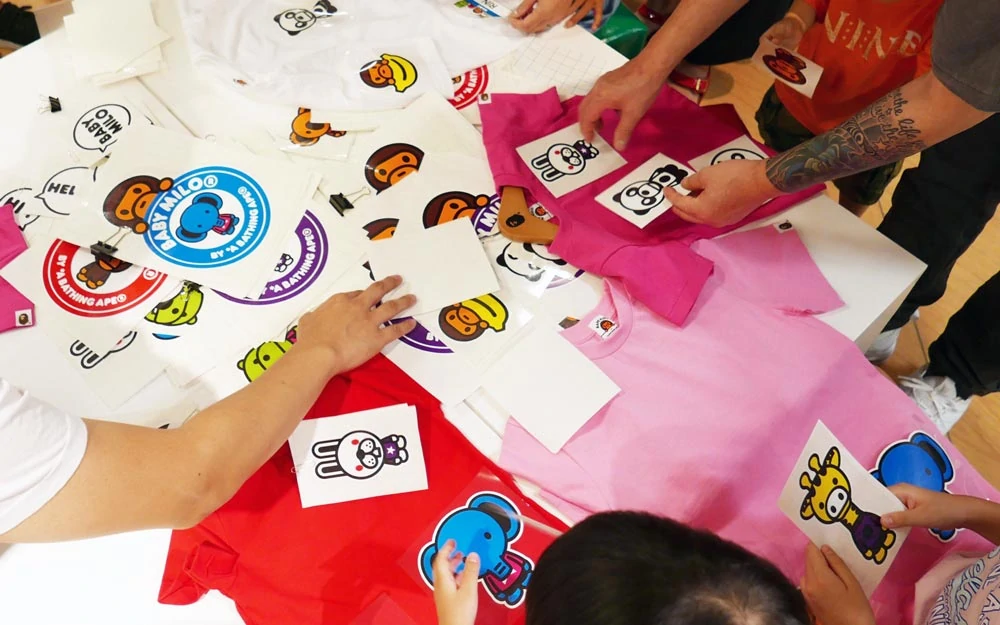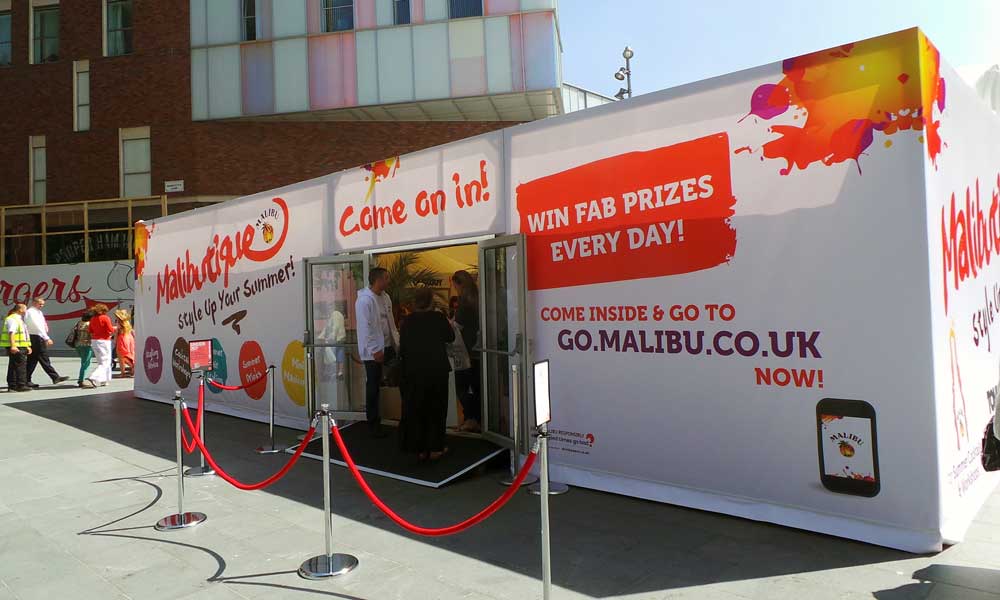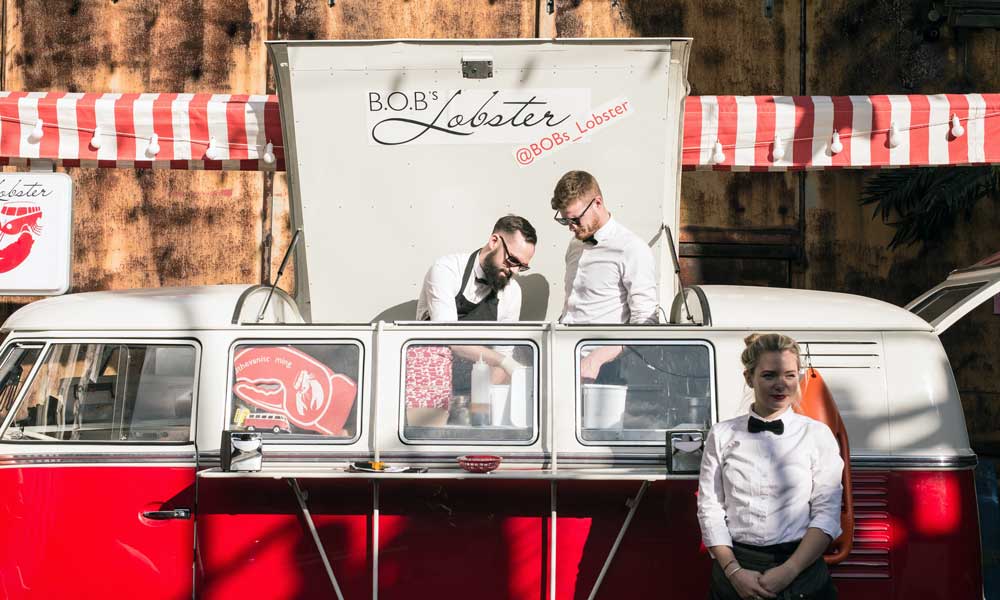Graphic Design for Events: A Comprehensive Guide
Want to create an outstanding and memorable event, be it a conference, music festival, awards ceremony or fundraising gala? You have secured an ideal location, invited great speakers/performers, and attracted impressive sponsors. However, how can you generate significant publicity for your function, get more people in attendance and make the whole show look professional?
The answer lies in excellent graphic design for events. In organising events of this kind, graphic design is crucial. It could be logos that are difficult to ignore, beautiful invitations, lively stage backdrops, and catching social media visuals. These effects make your occasion different from other common ones.
It is fundamentally about creating appealing images that communicate your event’s message, provide helpful information to participants, and help set the correct tone. This includes making a lasting first impression on everyone involved with the event by significantly impacting audiences.
Table of Contents
Why Does Event Graphic Design Matter?

Imagine you are scrolling through a myriad of event listings, email invites and social media posts. Which ones immediately pique your interest? Those with crisp, modern graphics instantly let the viewer know what the event is about.
Graphic design is not just optional for events in our visually-centred world; it is necessary for:
1. Making Your Event Eye-Catching
Considering how many events compete for attendees, sponsors, and media coverage, you need lively graphics that say, “Look at me!” Creative typography, bold hues and distinctive drawings or patterns make you jump out from the page or screen.
2. Reflecting Your Event’s Personality
From seeing your event’s branding, the visuals should give them an idea of your desired tone and vibe. An adorable illustrated character would work well in a children’s book festival. On the other hand, a rock music fest requires some edgy type and grunge textures. These graphics set expectations and build anticipation among people.
3. Providing Useful Information Clearly
Your event will be successful because people can easily access crucial information like dates, times, locations, and schedules. Graphic design uses layouts, maps, icons, etc., to render this vital info cleanly and legibly visually appealing.
4. Ensuring Brand Consistency
A uniform branded look in all your event graphics (website, emails, signage, etc.) creates professionalism and trustworthiness.’ Incidental, inconsistent designs put off people. Each piece reinforces your event identity with solid graphic guidelines.
5. Generating Buzz and Sharing
In today’s world of social media, however, buzzworthy graphics encourage engagement and sharing; both these factors are crucial during the pre-event build-up phase. The more interestingly designed they are, the more likely people will want to spread the word about such events by saying, ‘Wow! This looks so good!’
The Graphic Design Process for Events

It’s no small task to create visuals for a significant happening: it calls for careful planning, multiple discussions and creative brainstorming. Here’s an overview of how this can be done.
Phase 1: Discovery & Strategy
Before you start sketching on your touchscreen tablet, deliberate about the following aspects of your event:
- Goals & Objectives: What do you plan to achieve out of it, and who are you targeting?
- Overall Concept & Theme: What will your main visual message or plot be?
- Brand Guidelines: Do you have any existing brand assets such as logos, colour palettes or fonts?
Graphic artists must get fully acquainted with your vision to depict graphics accurately.
Phase 2: Brainstorming & Concepting
Having nailed down the event strategy, designers now enter into the creative part by means:
- Moodboards: collections of inspiring images, patterns, typography styles and colour palettes
- Rough Sketches & Thumbnail Ideation: brief pencil sketches/digital concepts flushing initial graphic ideas
- Photography & Illustration Concepts: specific imagery needed for original design solutions such as custom photo shoots or illustrations
By this point, designers should show a few graphic concepts they will help you choose from and refine.
Phase 3: Design Execution
After the core design direction has been approved, this is where the rubber meets the road, including:
- Logo & Brand Identity Creation: creating a signature logo, typefaces, colour schemes and graphic patterns.
- Print & Digital Design Production – putting designs into a website format, including email campaign posters, brochures, banners, etc.
- Signage & Environmental Design – creating wayfinding signs, registration desks, stage backdrops and venue decorations.
- Motion Graphics & Animation – developing animated graphics used in videos/presentations/digital displays
Given many possible graphic design applications, working with designers who understand event branding is clever.
Phase 4: Feedback & Revisions
Expect multiple rounds of feedback and revisions as visual assets are produced:
- Refine & Polish the Designs: Making minor adjustments to colours, fonts, layouts, etc.
- Ensure On-Brand Consistency: Ensuring all graphics conform to your approved brand guidelines.
- Update Content: Replacing temporary placeholder text with actual event details.
Professional graphic designers anticipate a lot of backwards and forwards as they work towards an outstanding final product.
Critical Elements of Successful Event Graphic Design

Top-notch event graphics don't happen by chance – they involve purposeful planning and execution. Let's take a closer look at some of the most essential elements:
A Unique & Memorable Visual Identity
At the heart of your event's graphics is an overarching visual identity expressed through:
- A Signature Logo: A simple, scalable emblem that instantly represents your event.
- A Recognisable Colour Palette: 2-4 signature hues that evoke your desired mood or theme.
- Distinctive Typography: A unique combination of complementary font styles.
- Ownable Graphic Patterns: Repeating graphics like geometric shapes, icons, textures or illustrations.
These core identity pieces should be versatile enough to work across all your graphic applications.
Robust Branding Guidelines
With so many designers potentially touching your event graphics, you need crystal-clear branding guidelines that cover:
- Logo Usage: How and where to use versions of your logo (primary, secondary, icons, etc.)
- Colour Specifications: Exact Pantone, CMYK, RGB & Hex colour build specs.
- Typography Rules: Your approved font families and how to use them correctly.
- Design Don'ts: Examples of what NOT to do with colours, typography, etc.
- Graphic Element Art: Master artwork files for patterns, icons, illustrations, etc.
Comprehensive guidelines keep graphic applications consistent and on-brand.
A Coordinated Design System
While individual graphics must be visually appealing, they should also fit into a cohesive overall design system. This systemic approach is defined as:
- Grid-Based Layouts: A modular structure for posters, websites and other layout-heavy items.
- Established Hierarchy: A transparent system for prioritising content using scale, colour and whitespace.
- Unified Design Principles: Consistent approaches to typography, iconography, imagery and more.
An event's graphic design system fosters a seamless, joined-up experience. It's like having one cohesive voice.
Strategic Content Prioritisation
Content prioritisation is crucial to each design execution. With limited space, designers must make savvy decisions about:
- Eye-Catching Focal Points: What is the #1 most important message or graphic element to highlight?
- Content Hierarchy: How should supporting info be prioritised and chunked in each layout?
- When to Simplify: Knowing what details to feature upfront versus hiding in smaller text or links.
Strategic content prioritisation prevents event graphics from looking cluttered or overwhelming.
Diversity of Design Applications
You've likely heard the term “multi-channel marketing” – the idea is to reach audiences wherever they are. The same goes for event graphics. Skilled designers develop visuals for:
Print: Posters, flyers, brochures, ads, direct mail, signage, name badges, etc.
Digital: Websites, emails, digital ads, social media graphics, PowerPoint presentations, etc.
Environmental: Stage backdrops, registration desks, venue decorations, sponsor activations, etc.
Motion: Animated graphics, video openers & bumpers, GIFs, digital signage content, etc.
A 360-degree graphic approach heightens visibility and creates a cohesive attendee experience.
Handy Event Graphic Design Tips

Whether you're a DIY event organiser or collaborating with professional designers, keep these helpful tips in mind:
Start the Design Process Early
Graphic design for significant events should begin at least 6-9 months in advance. Why so early? Because great design takes time. You'll need ample time for:
- The entire creative process (brainstorming, concepts, revisions)
- Printing lead times for banners, brochures and swag
- Social media promotions and sponsorship assets
- Generating pre-event buzz and ticket sales
Starting design early ensures your visuals look thoughtfully planned – not rushed and last-minute.
Set a Reasonable Design Budget
Design can make or break an event's success, so allocate sufficient funds. The investment is worth it to create a fantastic experience.
While costs vary based on complexity, plan to spend:
- Logo Design: £500 – £5,000
- Print Materials: £1,000 – £10,000
- Website Design: £2,000 – £25,000
- Venue Graphics: £1,000 – £20,000
- Video/Motion: £1,000 – £25,000
Work with your designer to prioritise must-have items versus nice-to-haves. And remember, budgets for professional printing/installation!
Communicate Your Vision Clearly
The more background you provide designers upfront, the better. Before your kickoff meeting:
- Gather examples of graphic styles you love and loathe
- Write a creative brief detailing your event concept/theme
- Prepare references like venue photos and existing branding
- Determine key messaging and marketing strategies
Clear communication prevents endless revisions and streamlines the process.
Leverage Existing Brand Assets
If you're hosting an annual event or working with an established organisation, you likely have branding guidelines to follow.
- Use their official logos, fonts and colours as a starting point
- Explore ways to adapt and refresh brand graphics each year
- Ensure new designs align with the organisation's core brand and tone
Consistency helps people instantly recognise your event. Work within brand constraints creatively.
Find the Right Design Partners
Not all graphic designers have relevant event expertise. When evaluating potential hires, look for:
- A portfolio with successful event projects of similar scope
- Experience across print, digital, environmental and motion
- Knowledge of current event design trends and best practices
- Positive client reviews and strong communication skills
- Project management capabilities to meet aggressive timelines
An experienced event branding pro makes the design process smoother.
Encourage Designer Creativity
While you're the client calling the shots, be open to creative solutions from your designers. After all, that's what you're paying them for!
- Let them explore unexpected graphic directions you hadn't considered
- Ask them to justify unique concepts that align with your goals
- Provide constructive feedback more than hard rejections
- Empower them to push boundaries within brand guidelines
With open collaboration, you'll arrive at more impactful designs than you could be alone.
Make Your Designs Work Smarter
An innovative, strategic approach is a must when developing graphics for events. While aesthetics matter, your visuals must:
- Guide Attendees Effortlessly: Use color-coding, iconography and visual cues for intuitive wayfinding.
- Keep Things Accessible: Ensure graphics aren't too small, colours have enough contrast, etc.
- Be Readable From a Distance: Leverage high-impact fonts, layouts and image styles.
- Reinforce Key Messages: Make sure branding and priority info are precise.
Think about how graphics will be experienced in different settings and environments.
Account for Printing and Production
Before finalising graphic designs, collaborate with your printer or producer on specifications:
- File Types & Dimensions: What formats do they need for large-scale prints or digital screens?
- Colour Profiles: What colour profile yields the best-matched print output?
- Bleed and Safe Zones: How much bleed space is needed for texts or graphics to look sharp?
- Materials & Finishes: What paper, substrate or treatments are required for unique concepts?
These tiny details affect how your designs appear when produced on large scales.
Leave Room for Personalisation
With so many graphic elements, don't overlook ways to personalise experiences, like:
- Social Media Integrations: Designing streams, GIFs and displays of user-generated content.
- Digital Experiences: Interactive gamification graphics, augmented reality or animations.
- Data Visualisation: Impactful infographics using real-time event data like Twitter metrics.
- Photo Activations: Custom step-and-repeat backdrops or green screen experiences.
Personalised, shareable graphic experiences amplify buzz and engagement.
Plan for After the Event Ends
An event's visuals live on long after attendees head home. Be sure designs extend into:
- Recap Videos & Photo Galleries: Stitch together motion graphics with footage highlights.
- Thank You Emails and Pages: Use branded graphic templates for sponsors and attendees.
- Social Media Graphics: Design branded Instagram Story templates for sharing key moments.
- Slide Deck & Print Takeaways: Let graphics guide post-event reports, booklets or handouts.
Cohesive post-event graphic materials reinforce the experience and your brand.
Final Thoughts on Creating Stellar Event Graphics

Whether hosting an intimate dinner or a massive conference, visually compelling graphic design is vital for events. It sets the tone, provides essential info, generates buzz and leaves lasting impressions on attendees.
While the upfront graphic design investment isn't insignificant, top-notch visuals more than pay for themselves through:
- Increased event registrations and attendance
- Higher sponsor satisfaction and renewals
- More social sharing and earned media
- An overall more professional, buttoned-up experience
So don't cut corners on design! With the right creative partners and planning, you can develop graphics that make your event successful.
Graphic Design for Events FAQs
What are the essential graphic design elements needed to stage events?
Essential elements include a signatory logo and visual identity system with a defined colour scheme, typography and graphic patterns. A clear set of branding guidelines, cohesive designs for layouts/grids, strategic content priorities, and various design applications such as print, digital, environmental, and video/motion are equally important.
How long before an event should I start designing its graphics?
Ideally, it should be done six to nine months before your event date. This will give you more time for the entire creative process, from conception to execution, printing production schedules and pre-event promotion.
How much should I budget for event graphic design?
Event costs vary depending on the size of your event and what you need. However, typical budgets may range from £500 to £5k for logos, £1k-£10k for print materials, £2,000-£25,000 for website/app design or even £1k-£20k venue/environmental graphics and £1k-£25k video/motion graphics. Consider professional printing costs as well as installation fees.
Can I use my company's already established brand guides?
If it’s an annual event or represents an existing organisation, utilise their logos, colours, fonts, and brand assets. In addition, find exciting ways to keep refreshing those brand graphics each year while keeping them up-to-date.
What should I look out for when hiring an event graphic designer?
Find designers who specialise in events with a proven portfolio of successful projects similar in scope and scale to yours. They should have cross-disciplinary experience in print, digital environmental motion design, etc..… A robust project management skill set also helps, along with knowledge of current trends in event design,s if possible.
How can I ensure my graphics look professional and consistent?
Give direction, such as creative briefs upfront, including reference imagery alongside key messaging priorities for your designers. Finally, ensure all visuals follow extensive branding and style guidelines once you have approved a core design direction. Be open to discussions as well as drafts to perfect graphics.
How can I make event graphics more personalised and engaging?
Integrate social media feeds, interactive graphics, real-time data visualisations, augmented reality, photo/video integrations, etc.… Design templates with brand graphics for attendees to share their personal event experiences by taking pictures. More dynamic images that are easy to share.
Besides promotions, where else do I need graphics for my event?
Event graphics go beyond just initial promotional materials. Signage, wayfinding, schedules, speaker profiles, PowerPoint decks, and stage backdrops will likely be needed. There will also be sponsors’ activations in post-event recaps/follow-ups. Consider the whole 360-degree attendee experience.
